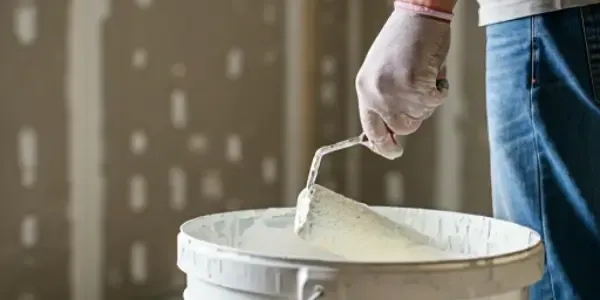Notifications
ALL BUSINESS
COMIDA
DIRECTORIES
ENTERTAINMENT
FINER THINGS
HEALTH
MARKETPLACE
MEMBER's ONLY
MONEY MATTER$
MOTIVATIONAL
NEWS & WEATHER
TECHNOLOGIA
TV NETWORKS
VIDEOS
VOTE USA 2026/2028
INVESTOR RELATIONS
COMING 2026 / 2027
ALL BUSINESS
COMIDA
DIRECTORIES
ENTERTAINMENT
FINER THINGS
HEALTH
MARKETPLACE
MEMBER's ONLY
MONEY MATTER$
MOTIVATIONAL
NEWS & WEATHER
TECHNOLOGIA
TV NETWORKS
VIDEOS
VOTE USA 2026/2028
INVESTOR RELATIONS
COMING 2026 / 2027
About Me
 Tim Jack
Tim Jack Throughout Virginia, Design Home Improvement provides professional remodeling and home renovation services. You can rely on us for excellent service and outstanding outcomes for everything from drywall repairs to full renovations.
 Tim Jack -
Jan 3 -
Family & Home -
291 views -
0 Comments -
0 Likes -
0 Reviews
Tim Jack -
Jan 3 -
Family & Home -
291 views -
0 Comments -
0 Likes -
0 Reviews

Ceiling drywall cracks are a common issue that homeowners encounter at some point. These unsightly cracks can appear for various reasons, ranging from natural settling of the house to more serious structural problems. While a small crack in ceiling drywall might seem like a minor issue, ignoring it could lead to more extensive damage over time. Fortunately, handling cracked ceiling drywall doesn’t have to be a daunting task. With the right tools, techniques, and knowledge, you can address the issue efficiently and restore your ceiling to its original beauty.
In this article, we will explore why cracks in ceiling drywall occur, how to repair them, and what steps to take to prevent future issues. Additionally, we will discuss the importance of considering professional help when dealing with significant cracks or more complex structural issues, and how home additions near me or renovating outside of the house might be connected to ceiling drywall repairs.
Understanding the root causes of cracks in ceiling drywall is the first step in addressing the problem effectively. Here are some common reasons why cracks can form in ceiling drywall:
1. Natural Settling of the House Over time, homes naturally settle due to the shifting of the ground beneath them. This is particularly common in older homes or houses built on expansive soils. As the foundation settles, it can cause the walls and ceilings to shift, leading to cracks in the drywall. These cracks are typically small and may appear as hairline fractures in the drywall surface.
2. Moisture Damage Moisture is one of the most common causes of cracks in ceiling drywall. Water leaks from plumbing pipes, roofs, or windows can seep into the drywall, weakening the material and causing it to expand and contract. As drywall absorbs moisture, it can lose its structural integrity, leading to cracks. This is especially problematic in bathrooms or kitchens, where high humidity levels are common.
3. Structural Issues In some cases, cracks in ceiling drywall may be a sign of more significant structural problems. For example, foundation issues or problems with load-bearing beams could cause the ceiling to sag or shift, resulting in visible cracks. These types of cracks are often wider, deeper, and more pronounced than those caused by settling.
4. Poor Installation or Material Defects Sometimes, cracks can appear in ceiling drywall due to poor installation or the use of subpar materials. If the drywall was not properly installed, or if it was subjected to excessive weight or pressure, it may crack over time. Additionally, low-quality drywall or joint compound may not adhere well, causing cracks to develop.
5. Temperature Fluctuations Extreme temperature fluctuations can also contribute to cracks in ceiling drywall. As temperatures rise and fall, drywall can expand and contract. This constant movement can cause joints to weaken and cracks to form, especially in areas of the ceiling that are exposed to direct sunlight or close to heating sources.
Repairing cracks in ceiling drywall is a straightforward process, but it requires patience and the right materials. Here is a step-by-step guide to efficiently repairing a crack in ceiling drywall:
1. Assess the Damage Before beginning the repair, take the time to assess the extent of the damage. If the crack is small and superficial, it’s likely a simple repair. However, if the crack is large or there are multiple cracks in different areas of the ceiling, you may be dealing with a more serious issue that requires professional attention.
2. Gather the Necessary Tools and Materials To repair a crack in ceiling drywall, you’ll need the following materials:
3. Clean the Area Begin by cleaning the area around the crack. Use a utility knife to remove any loose drywall or paint around the crack. Be careful not to damage the surrounding drywall or ceiling surface. Wipe the area with a damp cloth to remove any dust or debris.
4. Apply Joint Compound Next, apply a thin layer of joint compound over the crack using a putty knife. Spread the compound evenly, ensuring that it covers the entire crack. For larger cracks, you may need to apply a piece of drywall tape over the crack before applying the joint compound. The tape will help to reinforce the area and prevent the crack from reappearing.
5. Smooth the Surface Once the joint compound is applied, use the putty knife to smooth the surface. Try to make the compound as level as possible with the surrounding ceiling to avoid uneven spots. Allow the compound to dry for the recommended time (usually 24 hours).
6. Sand and Reapply Compound After the first layer of joint compound has dried, use fine-grit sandpaper to smooth the surface. If the crack is still visible, apply another layer of joint compound and smooth it out. Repeat this process until the repair is smooth and level with the rest of the ceiling.
7. Prime and Paint Once the joint compound is completely dry and smooth, apply a coat of primer to the repaired area. Priming helps to seal the joint compound and ensure that the paint adheres properly. After the primer has dried, paint the repaired area to match the rest of the ceiling.
8. Clean Up After the paint has dried, remove any drop cloths and clean up your tools. Make sure to dispose of any leftover joint compound or paint properly.
While repairing small cracks in ceiling drywall is a manageable DIY project for many homeowners, there are situations where it’s best to call in professionals. If the crack is large, particularly deep, or appears to be a result of structural damage, it’s crucial to seek help from drywall and contractor experts. This is especially true if you suspect that the crack is indicative of foundation issues or a problem with the load-bearing structure of the house.
Drywall and painter contractors can assess the situation, provide a more accurate diagnosis, and fix any underlying structural issues. Additionally, if the job requires more complex work or a larger scale repair, professionals have the experience and tools necessary to complete the task efficiently and safely.
Once you’ve repaired a crack in ceiling drywall, it’s essential to take steps to prevent future cracks from forming. Here are some preventive measures to consider:
1. Control Moisture Levels To avoid moisture-related cracks, ensure that your home is properly ventilated, especially in areas prone to high humidity, such as bathrooms and kitchens. Installing exhaust fans or improving ventilation can help to reduce the amount of moisture in the air.
2. Address Foundation Issues If your home is settling or there are foundation issues causing cracks in your drywall, it’s important to address these problems early. Foundation repairs can prevent further damage and keep your home structurally sound.
3. Monitor Temperature Changes In areas where temperature fluctuations are common, consider insulating your ceilings or installing materials that are better equipped to handle temperature changes. This can reduce the amount of expansion and contraction that leads to cracks.
Sometimes, cracks in ceiling drywall can be linked to larger home improvement projects, such as home additions or renovating outside of the house. For example, if you’re adding a new level to your home or building a new room, the structural changes can put additional stress on your existing ceiling. This can cause cracks to form or existing cracks to worsen.
If you’re planning home additions near me, it’s important to work with a contractor who understands the structural integrity of your home. A professional can ensure that the new construction doesn’t compromise your existing drywall, helping to prevent future cracks.
Similarly, if you’re renovating the outside of your house, such as replacing windows, doors, or the roofing, the changes can affect the pressure on your ceilings and walls. Renovating outside of the house can sometimes result in cracks in ceiling drywall, especially if the foundation or framing is disturbed during the renovation.
Cracks in ceiling drywall are a common but manageable issue for homeowners. Whether caused by natural settling, moisture, or structural issues, addressing the crack efficiently can prevent further damage and restore the beauty of your ceiling. By following a step-by-step repair process and taking preventive measures, you can enjoy a smooth, flawless ceiling once again.
However, if the crack is large, deep, or indicative of more serious problems, it’s important to call in drywall and painter contractors to ensure the issue is addressed correctly. Additionally, if you're considering home additions near me or renovating outside of the house, make sure to account for any potential impact on your ceiling drywall. With the right approach, your home’s ceiling can remain beautiful and crack-free for years to come.
